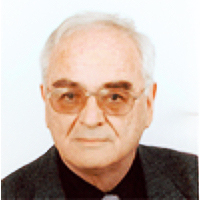Abstract
Research Article
Short-term responses to high-dose inhaled corticosteroid treatment in patients with chronic obstructive pulmonary disease with a fractional nitric oxide concentration over 35 parts per billion: A single-centre pre–post study
Akihiro Shiroshita*, Yu Tanaka, Kei Nakashima, Atsushi Shiraishi, Hiroki Matsui and Masahiro Aoshima
Published: 06 October, 2020 | Volume 4 - Issue 1 | Pages: 012-017
Introduction: There is currently no strategy for identifying chronic obstructive pulmonary disease (COPD) patients whose pulmonary function could benefit from inhaled corticosteroids. We investigated whether a 28-day regime of inhaled corticosteroids improved pulmonary function test results among COPD patients with a fractional exhaled nitric oxide concentration > 35 parts per billion.
Methods: This single-centre one-arm pre–post trial included COPD patients with a fractional exhaled nitric oxide concentration > 35 parts per billion treated at our institution from September 2018 to August 2019. Patients were administered budesonide (200 μg, 8 puffs daily) for 28 days. The primary outcome measure was the difference between the forced expiratory volume in 1 s (FEV1) at baseline and after 28 days of inhaled corticosteroid treatment. Secondary outcomes included differences in COPD Assessment Test scores, %FEV1, and that between the percent forced vital capacity (%FVC) at baseline and after 28 days of treatment.
Results: Twenty patients completed the 28-day inhaled corticosteroid regime. The mean difference in FEV1 between day 1 and day 28 was 340 mL (95% confidence interval: −100 to 770 mL; p = 0.122). The mean differences in secondary outcomes were: %FVC, −0.16% (95% confidence interval [CI]: −2.84 to 2.53%; p = 0.905); %FEV1, 1.63% (95%CI: −4.56 to 7.81%; p = 0.589); COPD Assessment Test score, −2.50 (95%CI: −5.72 to 0.72; p = 0.121).
Conclusion: The 28-day course of inhaled corticosteroids yielded no significant difference in FEV1 for COPD patients with a fractional exhaled nitric oxide concentration > 35 parts per billion.
Trial registration: University Hospital Medical Information Network Center, UMIN000034005. Registered 3 September 2018.
https://upload.umin.ac.jp/cgi-open-bin/ctr/ctr_view.cgi?recptno=R000038557
Read Full Article HTML DOI: 10.29328/journal.aaai.1001020 Cite this Article Read Full Article PDF
Keywords:
Chronic obstructive pulmonary disease; Fractional exhaled nitric oxide; Inhaled corticosteroid; Pulmonary function test
References
- Buist AS, McBurnie MA, Vollmer WM, Gillespie S, Burney P, et al. International variation in the prevalence of COPD (the BOLD Study): a population-based prevalence study. Lancet. 2007; 370: 741. PubMed: https://pubmed.ncbi.nlm.nih.gov/17765523/
- Boulet LP, Reddel HK, Bateman E, Pedersen S, FitzGerald JM, et al. The Global Initiative for Asthma (GINA): 25 years later. Eur Respir J. 2019; 29:1900598. PubMed: https://pubmed.ncbi.nlm.nih.gov/31273040/
- Alshabanat A, Zafari Z, Albanyan O, Dairi M, FitzGerald JM. Asthma and COPD Overlap Syndrome (ACOS): A systematic review and meta-analysis. PLoS One. 2015; 10: e0136065. https://pubmed.ncbi.nlm.nih.gov/26336076/
- Hardin M, Cho M, McDonald ML, et al. The clinical and genetic features of COPD-asthma overlap syndrome. Eur Respir J. 2014; 44: 341-350. PubMed: https://pubmed.ncbi.nlm.nih.gov/24876173/
- Singh D, Agusti A, Anzueto A, Beaty T, Ramsdell J, et al. Global strategy for the diagnosis, management, and prevention of chronic obstructive lung disease: the GOLD science committee report 2019. Eur Respir J. 2019; 53: 1900164. PubMed: https://pubmed.ncbi.nlm.nih.gov/24876173/
- Soler-Cataluña JJ, Novella L, Soler C, Nieto ML, Esteban V, et al. Clinical characteristics and risk of exacerbations associated with different diagnostic criteria of asthma-COPD overlap. Arch Bronconeumol. 2020; 56: 282-290. PubMed: https://pubmed.ncbi.nlm.nih.gov/31784349/
- Sin DD, Miravitlles M, Mannino DM, Soriano JB, Price D, et al. What is asthma-COPD overlap syndrome? Towards a consensus definition from a round table discussion. Eur Respir J. 2016; 48: 664-673. PubMed: https://pubmed.ncbi.nlm.nih.gov/27338195/
- The Japanese Respiratory Society Guidelines for the Management of Asthma and COPD Overlap. 2018.
- Dweik RA, Boggs PB, Erzurum SC, Irvin CG, Leigh MW et al. An official ATS clinical practice guideline: interpretation of exhaled nitric oxide levels (FENO) for clinical applications. Am J Respir Crit Care Med. 2011; 184: 602-615. PubMed: https://pubmed.ncbi.nlm.nih.gov/21885636/
- American Thoracic Society. European Respiratory Society. ATS/ERS recommendations for standardized procedures for the online and offline measurement of exhaled lower respiratory nitric oxide and nasal nitric oxide, 2005. Am J Respir Crit Care Med. 2005; 171: 912-930. PubMed: https://pubmed.ncbi.nlm.nih.gov/15817806/
- Leigh R, Pizzichini MM, Morris MM, Maltais F, Hargreave FE, et al. Stable COPD: predicting benefit from high-dose inhaled corticosteroid treatment. Eur Respir J. 2006; 27:964-971. PubMed: https://pubmed.ncbi.nlm.nih.gov/16446316/
- Brightling CE, McKenna S, Hargadon B, Birring S, Green R, et al. Sputum eosinophilia and the short-term response to inhaled mometasone in chronic obstructive pulmonary disease. Thorax. 2005; 60: 193-198. PubMed: https://www.ncbi.nlm.nih.gov/pmc/articles/PMC1747331/
- Brightling CE, Monteiro W, Ward R, Parker D, Morgan MD, et al. Sputum eosinophilia and short-term response to prednisolone in chronic obstructive pulmonary disease: a randomised controlled trial. Lancet. 2000; 356:1480-1485. PubMed: https://pubmed.ncbi.nlm.nih.gov/11081531/
- Pizzichini E, Pizzichini MM, Gibson P, Parameswaran K, Gleich GJ, et al. Sputum eosinophilia predicts benefit from prednisone in smokers with chronic obstructive bronchitis. Am J Respir Crit Care Med. 1998; 158: 1511-1517. PubMed: https://pubmed.ncbi.nlm.nih.gov/9817701/
- Culver BH, Graham BL, Coates AL, Wanger J, Berry CE, et al. Recommendations for a standardized pulmonary function report. An official American Thoracic Society Technical statement. Am J Respir Crit Care Med. 2017; 196: 1463-1472. PubMed: https://pubmed.ncbi.nlm.nih.gov/29192835/
- org [Internet]. Tennessee: Vanderbilt University; c2004. https://projectredcap.org/.
- r-project.org. [Internet]. The R Foundation. 2018. https://www.r-project.org/.
- Tamada T, Sugiura H, Takahashi T, Matsunaga K, Kimura K, et al. Biomarker-based detection of asthma-COPD overlap syndrome in COPD populations. Int J Chron Obstruct Pulmon Dis. 2015; 10: 2169-2176. PubMed: https://pubmed.ncbi.nlm.nih.gov/26491283/
- Papi A, Romagnoli M, Baraldo S, Braccioni F, Guzzinati I, et al. Partial reversibility of airflow limitation and increased exhaled NO and sputum eosinophilia in chronic obstructive pulmonary disease. Am J Respir Crit Care Med. 2000; 162: 1773-1777. PubMed: https://pubmed.ncbi.nlm.nih.gov/11069811/
- Akamatsu K, Matsunaga K, Sugiura H, Koarai A, Hirano T, et al. Improvement of airflow limitation by fluticasone propionate/salmeterol in chronic obstructive pulmonary disease: What is the specific marker? Front Pharmacol. 2011; 2: 36. PubMed: https://pubmed.ncbi.nlm.nih.gov/21811461/
- Szefler SJ, Wenzel S, Brown R, Erzurum SC, Fahy JV, et al. Asthma outcomes: biomarkers. J Allergy Clin Immunol. 2012; 129(3 Suppl): S9-S23. PubMed: https://pubmed.ncbi.nlm.nih.gov/22386512/
- Pizzichini MM, Pizzichini E, Clelland L, Efthimiadis A, Mahony J, et al. Sputum in severe exacerbations of asthma: kinetics of inflammatory indices after prednisone treatment. Am J Respir Crit Care Med. 1997; 155: 1501-1508. PubMed: https://pubmed.ncbi.nlm.nih.gov/9154849/
- Roche N, Chapman KR, Vogelmeier CF, Herth FJF, Thach C, et al. Blood eosinophils and response to maintenance chronic obstructive pulmonary disease treatment. Data from the FLAME trial. Am J Respir Crit Care Med. 2017; 195: 1189-1197. PubMed: https://pubmed.ncbi.nlm.nih.gov/28278391/
- Watz H, Tetzlaff K, Wouters EF, Kirsten A, Magnussen H, et al. Blood eosinophil count and exacerbations in severe chronic obstructive pulmonary disease after withdrawal of inhaled corticosteroids: a post-hoc analysis of the WISDOM trial. Lancet Respir Med. 2016; 45: 390-398. PubMed: https://pubmed.ncbi.nlm.nih.gov/27066739/
- Kalinina EP, Denisenko YK, Vitkina TI, Lobanova EG, Novgorodtseva TP, et al. The mechanisms of the regulation of immune response in patients with comorbidity of chronic obstructive pulmonary disease and asthma. Can Respir J. 2016; 2016: 4503267. PubMed: https://pubmed.ncbi.nlm.nih.gov/27660519/
- Ansotegui IJ, Melioli G, Canonica GW, Caraballo L, Villa E, et al. IgE allergy diagnostics and other relevant tests in allergy, a World Allergy Organization position paper. World Allergy Organ J. 2020; 13: 100080. PubMed: https://www.ncbi.nlm.nih.gov/pmc/articles/PMC7044795/
- Vestbo J, Anderson W, Coxson HO, Crim C, Dawber F, et al. Evaluation of COPD longitudinally to identify predictive surrogate end-points (ECLIPSE). Eur Respir J. 2008; 31: 869-873. PubMed: https://pubmed.ncbi.nlm.nih.gov/18216052/
Figures:

Figure 1

Figure 2
Similar Articles
-
Inducible Laryngeal Obstruction/Vocal Cord Dysfunction and the Role It Plays in Refractory AsthmaJay I Peters*,Jorge Villalpando,Sandra G Adams. Inducible Laryngeal Obstruction/Vocal Cord Dysfunction and the Role It Plays in Refractory Asthma. . 2017 doi: 10.29328/journal.haard.1001005; 1: 036-039
-
Short-term responses to high-dose inhaled corticosteroid treatment in patients with chronic obstructive pulmonary disease with a fractional nitric oxide concentration over 35 parts per billion: A single-centre pre–post studyAkihiro Shiroshita*,Yu Tanaka,Kei Nakashima,Atsushi Shiraishi,Hiroki Matsui,Masahiro Aoshima. Short-term responses to high-dose inhaled corticosteroid treatment in patients with chronic obstructive pulmonary disease with a fractional nitric oxide concentration over 35 parts per billion: A single-centre pre–post study. . 2020 doi: 10.29328/journal.aaai.1001020; 4: 012-017
-
A retrospective cohort study to evaluate the relationship of airway hyperresponsiveness to type 2 biomarkers in persistent asthmaRory Chan,Chris RuiWen Kuo,Brian Lipworth*. A retrospective cohort study to evaluate the relationship of airway hyperresponsiveness to type 2 biomarkers in persistent asthma. . 2021 doi: 10.29328/journal.aaai.1001023; 5: 008-013
Recently Viewed
-
Prediction of neonatal and maternal index based on development and population indicators: a global ecological studySedigheh Abdollahpour,Hamid Heidarian Miri,Talat Khadivzadeh*. Prediction of neonatal and maternal index based on development and population indicators: a global ecological study. Clin J Obstet Gynecol. 2021: doi: 10.29328/journal.cjog.1001096; 4: 101-105
-
A Genetic study in assisted reproduction and the risk of congenital anomaliesKaparelioti Chrysoula,Koniari Eleni*,Efthymiou Vasiliki,Loutradis Dimitrios,Chrousos George,Fryssira Eleni. A Genetic study in assisted reproduction and the risk of congenital anomalies. Clin J Obstet Gynecol. 2021: doi: 10.29328/journal.cjog.1001095; 4: 096-100
-
Leiomyosarcoma in pregnancy: Incidental finding during routine caesarean sectionToon Wen Tang*,Phoon Wai Leng Jessie. Leiomyosarcoma in pregnancy: Incidental finding during routine caesarean section. Clin J Obstet Gynecol. 2021: doi: 10.29328/journal.cjog.1001094; 4: 092-095
-
Adult Neurogenesis: A Review of Current Perspectives and Implications for Neuroscience ResearchAlex, Gideon S*,Olanrewaju Oluwaseun Oke,Joy Wilberforce Ekokojde,Tolulope Judah Gbayisomore,Martina C. Anene-Ogbe,Farounbi Glory,Joshua Ayodele Yusuf. Adult Neurogenesis: A Review of Current Perspectives and Implications for Neuroscience Research. J Neurosci Neurol Disord. 2024: doi: 10.29328/journal.jnnd.1001102; 8: 106-114
-
Late discover of a traumatic cardiac injury: Case reportBenlafqih C,Bouhdadi H*,Bakkali A,Rhissassi J,Sayah R,Laaroussi M. Late discover of a traumatic cardiac injury: Case report. J Cardiol Cardiovasc Med. 2019: doi: 10.29328/journal.jccm.1001048; 4: 100-102
Most Viewed
-
Evaluation of Biostimulants Based on Recovered Protein Hydrolysates from Animal By-products as Plant Growth EnhancersH Pérez-Aguilar*, M Lacruz-Asaro, F Arán-Ais. Evaluation of Biostimulants Based on Recovered Protein Hydrolysates from Animal By-products as Plant Growth Enhancers. J Plant Sci Phytopathol. 2023 doi: 10.29328/journal.jpsp.1001104; 7: 042-047
-
Sinonasal Myxoma Extending into the Orbit in a 4-Year Old: A Case PresentationJulian A Purrinos*, Ramzi Younis. Sinonasal Myxoma Extending into the Orbit in a 4-Year Old: A Case Presentation. Arch Case Rep. 2024 doi: 10.29328/journal.acr.1001099; 8: 075-077
-
Feasibility study of magnetic sensing for detecting single-neuron action potentialsDenis Tonini,Kai Wu,Renata Saha,Jian-Ping Wang*. Feasibility study of magnetic sensing for detecting single-neuron action potentials. Ann Biomed Sci Eng. 2022 doi: 10.29328/journal.abse.1001018; 6: 019-029
-
Pediatric Dysgerminoma: Unveiling a Rare Ovarian TumorFaten Limaiem*, Khalil Saffar, Ahmed Halouani. Pediatric Dysgerminoma: Unveiling a Rare Ovarian Tumor. Arch Case Rep. 2024 doi: 10.29328/journal.acr.1001087; 8: 010-013
-
Physical activity can change the physiological and psychological circumstances during COVID-19 pandemic: A narrative reviewKhashayar Maroufi*. Physical activity can change the physiological and psychological circumstances during COVID-19 pandemic: A narrative review. J Sports Med Ther. 2021 doi: 10.29328/journal.jsmt.1001051; 6: 001-007

HSPI: We're glad you're here. Please click "create a new Query" if you are a new visitor to our website and need further information from us.
If you are already a member of our network and need to keep track of any developments regarding a question you have already submitted, click "take me to my Query."















































































































































